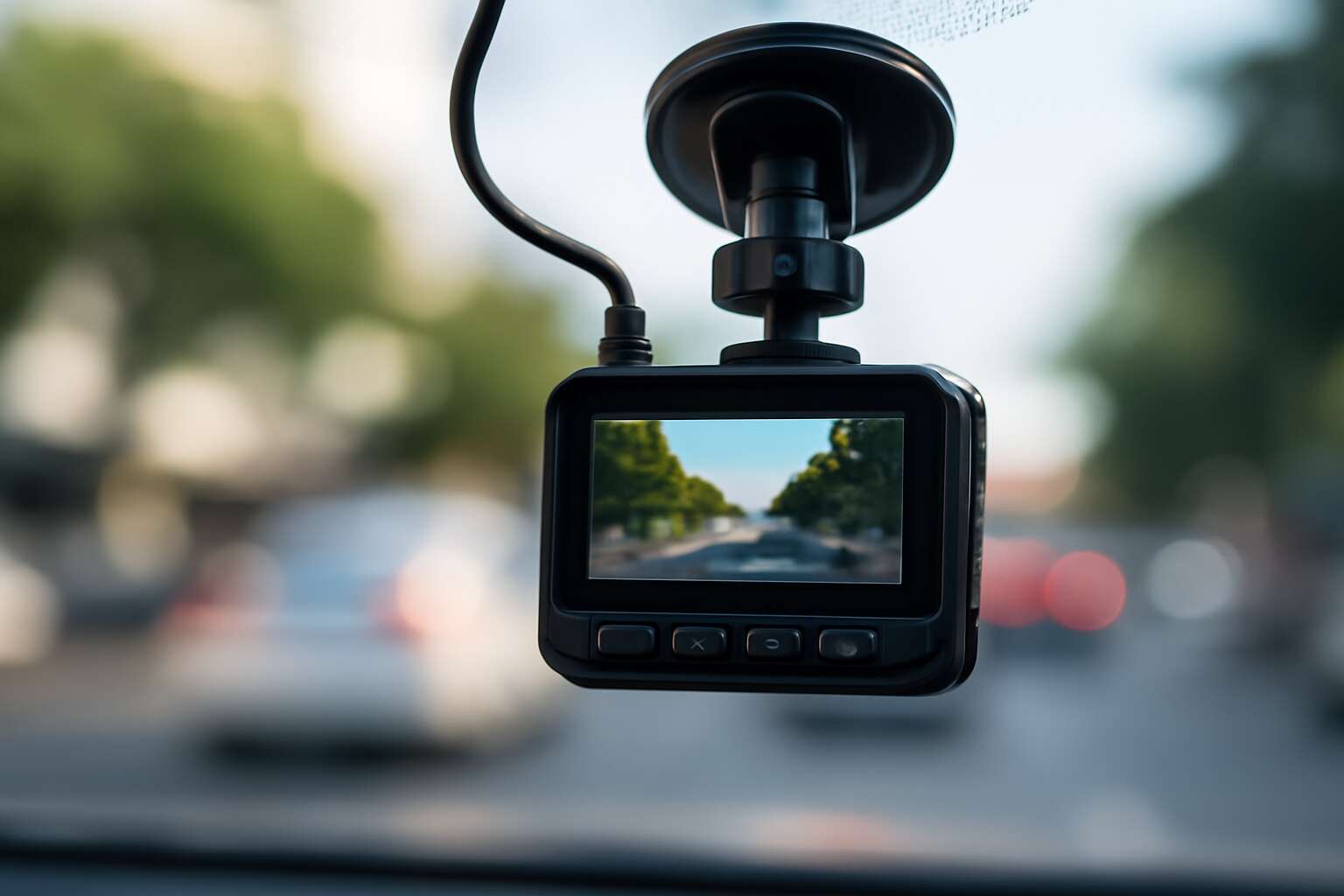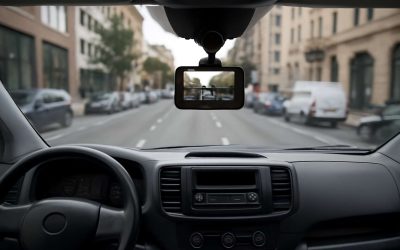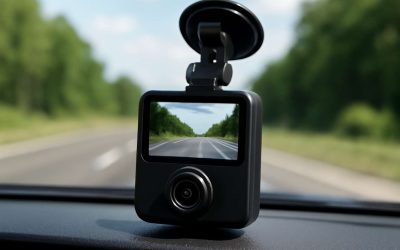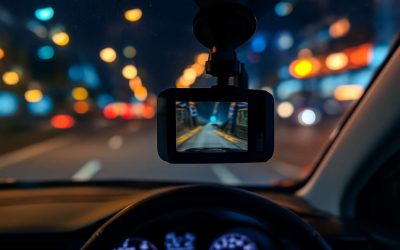Understanding Dash Cameras and Their Functions
What Are Dash Cameras? – Definition and Types of Dash Cameras
In the bustling streets of South Africa, where every driver is a potential protagonist in their own traffic drama, dash cameras have become the modern-day eyewitnesses—silent but surprisingly persuasive. But what exactly are dash cameras, and can dash cameras be used as evidence in court? It turns out, quite often yes, especially when the footage is crystal clear and properly stored. These compact devices come in a variety of types, from basic models that record in a loop to high-end versions with night vision and GPS tracking. Their primary function? To capture every twist and turn on the road, serving as a digital eyewitness in the event of an accident or dispute.
Understanding the different types of dash cameras is crucial for anyone considering their role as evidence. The most common are single-lens models, which record in front of the vehicle, and dual-lens cameras that also keep an eye on the interior. Some premium options even include features like collision detection and real-time alerts. With this tech in your vehicle, the question isn’t just whether you can trust dash cameras as evidence but also how effectively they can protect you from false claims and insurance disputes in South Africa’s often chaotic traffic environment.
How Do Dash Cameras Work? – Features and Recording Capabilities
Understanding dash cameras and their functions reveals a fascinating blend of technology and practicality. At their core, these devices are compact, yet remarkably sophisticated tools designed to capture every moment on the road. When properly installed, they serve as vigilant digital witnesses, documenting incidents with clarity and precision. Many models come equipped with features such as high-definition recording, wide-angle lenses, and even night vision, ensuring no crucial detail goes unnoticed regardless of lighting conditions.
So, how do dash cameras work? Essentially, they continuously record as long as the vehicle is powered, often in a looping fashion that overwrites the oldest footage to make room for new recordings. This constant vigilance is made possible through advanced sensor technology and seamless data storage systems. For those seeking extra security, some models include GPS tracking and collision detection—features that not only enhance recording capabilities but also provide valuable metadata for legal or insurance purposes.
- High-definition video resolution for crystal-clear footage.
- Wide-angle lenses to capture broad vistas of the road and surroundings.
- Automatic incident detection that flags sudden impacts or movements.
With these capabilities, one might wonder: can dash cameras be used as evidence in court? The answer is increasingly yes, especially when the footage is unaltered and stored securely. Their role as digital witnesses offers a compelling advantage in South Africa’s often chaotic traffic environment, helping drivers protect themselves from false claims and insurance fraud. Ultimately, the effectiveness of a dash camera as evidence hinges on its quality, proper installation, and the integrity of the recorded data—making this technology an essential tool for responsible drivers everywhere.
Reasons to Use a Dash Camera – Safety, Security, and Evidence Collection
In a world where chaos often rules the roads, the silent witness of a dash camera can become a life-changing asset. These unassuming devices do more than record—they capture moments of truth that can be pivotal in legal disputes or insurance claims. The question looms large: can dash cameras be used as evidence? The answer is increasingly affirmative, especially when footage remains unaltered and securely stored. Their role as digital witnesses lends a new dimension to road safety and accountability.
Understanding the core functions of dash cameras reveals their profound potential. They serve as vigilant guardians, documenting every nuance of your journey with high-definition clarity and wide-angle coverage. When mounted correctly, they transform into a transparent eye that witnesses incidents, sometimes even capturing subtle details missed by human perception. This is why many drivers in South Africa rely on dash cameras not just for security, but also as a safeguard in legal situations.
Reasons to use a dash camera extend beyond mere recording. They enhance safety, deter reckless driving, and provide irrefutable evidence in the event of an accident. Whether facing aggressive road users or false claims, the footage from a reliable dash camera can decisively support a driver’s version of events. In fact, the ability to use dash camera footage as evidence has become a cornerstone of modern road justice, underpinning claims with undeniable visual proof.
Legal Aspects of Using Dash Camera Footage as Evidence
Legal Recognition of Dash Camera Footage – Admissibility in Court
Legal recognition of dash camera footage is a topic that often sparks debate, especially when it comes to its use in court. In South Africa, the admissibility of dash camera footage as evidence hinges on several factors, including how the footage was obtained and whether it has been tampered with. Courts generally accept dash camera recordings if they are relevant, authentic, and presented properly. However, challenges can arise if the footage is contested or if the chain of custody isn’t clear. The key question remains: can dash cameras be used as evidence? The answer is increasingly yes, but with caveats. Properly recorded and preserved footage can serve as a powerful piece of evidence, especially in traffic disputes or accident investigations. The legal landscape continues to evolve, reflecting the growing importance of dash cameras in modern security and law enforcement efforts. Ultimately, the value of dash camera footage depends on its credibility and how convincingly it can be linked to the incident in question.
Jurisdictional Variations – Different Laws by Region or State
Legal standards surrounding the use of dash camera footage as evidence vary significantly across different regions. In South Africa, courts tend to accept dash camera recordings if they meet criteria of authenticity and relevance. However, in other jurisdictions, such as certain states in the United States or European countries, specific laws govern the admissibility of such footage. These laws often focus on how the dash camera footage was obtained, whether it has been tampered with, and if the chain of custody is maintained properly.
Understanding these jurisdictional variations is crucial. For instance, some regions require that dash camera recordings be certified as authentic or that they are accompanied by sworn affidavits. Others may have strict rules about digital evidence integrity, making it essential for users to be aware of local legislation. Ultimately, whether can dash cameras be used as evidence hinges on compliance with these regional legal frameworks, which continue to evolve as the technology becomes more widespread.
Privacy Concerns and Consent – Legal Constraints on Recording
In the quiet corridors of legal proceedings, the question often arises: can dash cameras be used as evidence? While these unassuming devices serve as vigilant sentinels on our journeys, their role in courtrooms is governed by a labyrinth of legal constraints and privacy considerations. The very act of recording, especially without explicit consent, can sometimes blur the lines between legitimate evidence and unlawful intrusion.
Legal frameworks surrounding dash camera footage emphasize the importance of respecting individual privacy. In South Africa, courts tend to accept footage if it adheres to authenticity and relevance standards. Yet, in regions with strict privacy laws—such as certain states in the United States or European jurisdictions—the legality hinges on proper consent and digital evidence integrity. For instance, recording in private spaces without permission can undermine the admissibility of the footage.
Moreover, maintaining the chain of custody and ensuring the digital evidence has not been tampered with are paramount. To navigate these murky waters, some jurisdictions require sworn affidavits certifying the authenticity of dash camera recordings. This safeguards the integrity of the evidence and bolsters its credibility in legal proceedings, ultimately answering the question—can dash cameras be used as evidence—affirmatively, but only within these strict legal parameters.
Criteria for Dash Camera Footage to Be Accepted as Evidence
Authenticity and Integrity – Ensuring Unaltered Recordings
Ensuring that dash camera footage can be used as evidence hinges on its authenticity and integrity. Courts require clear proof that the recordings are unaltered and reliable, which is crucial in legal proceedings. If a dash camera’s recording is tampered with, it loses credibility and can be dismissed. To prevent this, many dash cameras feature built-in secure storage and tamper-proof technology, which helps maintain the chain of custody.
In South Africa, where legal standards are becoming more rigorous, the question of can dash cameras be used as evidence often boils down to how well the footage can be authenticated. A key factor is whether the recording has a verifiable timestamp and whether the device’s settings were unaltered at the time of recording.
A simple way to think about it is: if the footage can be traced back to a trusted source without any doubts about its integrity, it stands a better chance of being accepted in court. This is why understanding the criteria for dash camera footage to be accepted as evidence is so vital.
Timestamp and Geolocation Data – Proving When and Where the Incident Occurred
In South Africa’s evolving legal landscape, the question of can dash cameras be used as evidence is more pertinent than ever. Courts demand concrete proof that footage is authentic and unaltered. Key to this is the presence of accurate timestamp and geolocation data embedded within the recordings. These details establish a clear timeline and precise location of an incident, making the footage significantly more credible in legal proceedings.
To meet the necessary criteria, dash cameras should automatically record and lock crucial data such as date, time, and GPS coordinates. Ensuring these are verifiable and unchangeable is vital for the footage to be accepted as reliable evidence. Some advanced models even feature secure encryption to prevent tampering, which reinforces their credibility in court cases.
- Timestamp data verifies exactly when the incident occurred.
- Geolocation data confirms where the incident took place.
When these elements are accurately recorded and can be independently validated, the footage’s integrity remains intact. This transparency strengthens the case for can dash cameras be used as evidence in South African courts, where proof of authenticity is non-negotiable. Ultimately, without reliable timestamp and location details, even the clearest footage risks being dismissed as inadmissible. Ensuring these data points are intact and verifiable is the cornerstone of turning dash camera recordings into compelling evidence.
Clear and Unambiguous Footage – Video Quality and Visibility
In the labyrinth of legal scrutiny, clarity is king. When considering if dash cameras can be used as evidence, the visual integrity of the footage becomes paramount. Clear and unambiguous recordings are the bedrock of credible evidence, transforming fleeting moments into irrefutable truths. Shadows, blurs, or obscured details can unravel even the most compelling case, making the quality of video footage a decisive factor in courtrooms across South Africa.
To stand firm in the face of legal challenges, dash camera footage must be crisp, well-lit, and precisely visible—every detail sharply etched against the backdrop of the incident. High-resolution models equipped with wide-angle lenses ensure that no crucial element escapes the lens, bolstering the footage’s authenticity. Moreover, the presence of illuminated license plates, road signs, or pedestrians can mean the difference between acceptance and rejection of your evidence.
Ensuring the footage’s technical excellence isn’t enough—its integrity must be safeguarded. This involves employing secure storage methods, encryption, and tamper-proof features. When the clarity of the footage harmonizes with its unaltered state, the question of can dash cameras be used as evidence shifts from speculation to certainty, painting a vivid picture that courts cannot ignore.
Best Practices for Using Dash Camera Footage in Legal Cases
Proper Documentation – Saving and Backing Up Footage
When considering whether can dash cameras be used as evidence in legal cases, proper documentation is crucial. Without organized and secure footage, even the most compelling evidence can be rendered inadmissible. Ensuring that recordings are saved correctly and backed up can make all the difference in a courtroom. It’s not enough to simply capture footage; maintaining its integrity is equally vital.
To avoid disputes over authenticity, always store dash camera footage in multiple secure locations. Use reliable storage devices and cloud backups to prevent loss or corruption. Additionally, keeping a detailed log of when and where the footage was recorded can help establish its credibility. Implementing a systematic approach—such as creating a timestamped archive—ensures that the evidence remains unaltered and trustworthy when presented in legal proceedings.
Overall, meticulous documentation and secure handling of dash camera footage reinforce its value as evidence. This approach not only supports the legal process but also upholds the integrity of the data, making it more likely to be accepted in court. Remember, if you’re asking can dash cameras be used as evidence, the answer depends heavily on how well the footage is preserved and documented throughout the investigative process.
Chain of Custody – Maintaining Record Integrity
In the labyrinthine corridors of justice, every thread of truth must be woven with meticulous care. When considering whether can dash cameras be used as evidence, the sanctity of a pristine chain of custody becomes paramount. Each fragment of recorded footage is a fragile shard of credibility—without careful stewardship, it risks shattering under scrutiny. Maintaining record integrity is not merely a procedural step; it is the guardian of authenticity, ensuring that what is captured remains untarnished and unimpeachable.
To safeguard this delicate chain, it is essential to implement systematic procedures. This includes using tamper-proof storage and detailed logs that chronicle every interaction with the footage—such as timestamping, geolocation data, and access history. An ordered archive—perhaps a numbered sequence or encrypted files—serves as a digital ledger, affirming the footage’s unaltered state. Such diligence transforms raw video into a potent, reliable piece of evidence that can withstand the rigorous examination within a courtroom.
In the pursuit of irrefutable proof, consider this: the integrity of dash camera evidence depends on unwavering discipline. A well-maintained chain of custody becomes the backbone of legal credibility, transforming fleeting images into a formidable testament to truth. When pondering if can dash cameras be used as evidence, remember—the secret lies in how carefully this evidence is preserved, documented, and protected from compromise.
Consulting Legal Experts – Working with Attorneys or Authorities
When it comes to leveraging dash camera footage in legal disputes, working with legal experts or authorities isn’t just advisable—it’s essential. The nuanced nature of admissibility means that the integrity of the footage must be beyond reproach. Professionals can guide you through the labyrinth of legal protocols, ensuring that the evidence you present is both credible and compelling.
One of the best practices is to collaborate closely with attorneys who specialize in evidence law. They can help you understand regional variations—like in South Africa—where laws regarding dash camera footage may differ significantly. To streamline the process, consider implementing a systematic approach such as:
- Securely backing up original footage on tamper-proof storage devices
- Maintaining detailed logs of every interaction with the footage
- Documenting timestamps, geolocation data, and access history meticulously
By doing so, you not only strengthen your case but also demonstrate that can dash cameras be used as evidence is a question rooted in authenticity. The key is transparency—working with legal professionals ensures your footage remains an unwavering pillar of truth in courtrooms or investigations alike.
Limitations and Challenges of Using Dash Camera Footage as Evidence
Technical Limitations – Video Quality, Power Supply, and Storage
While dash cameras have become invaluable tools for capturing roadside incidents, their use as evidence is not without hurdles. Technical limitations can sometimes undermine their credibility in a courtroom. For instance, poor video quality can obscure crucial details, making it difficult to distinguish license plates or facial features. Power supply issues, such as battery drain or accidental disconnection, threaten the continuity of recordings when they are needed most. Storage capacity is another persistent challenge; insufficient memory can lead to overwritten footage, risking the loss of vital evidence.
These issues underscore the importance of understanding how technical constraints influence the reliability of dash camera footage as evidence. A clear, unambiguous recording isn’t just a bonus—it’s essential. Ensuring proper documentation, such as timestamp and geolocation data, helps bolster the authenticity of the footage. When considering whether can dash cameras be used as evidence, awareness of these technical limitations can be the difference between a compelling case and a missed opportunity for justice.
Potential for Manipulation – Ensuring Footage is Genuine
While dash cameras have revolutionized roadside safety and incident documentation, their potential as compelling evidence is not without its shadows. One of the most insidious challenges lies in the potential for manipulation; digital footage, after all, can be altered or edited, casting doubt on its authenticity. This raises a critical question—can dash cameras be used as evidence if the footage’s integrity is compromised? Ensuring the footage remains genuine involves meticulous procedures, such as maintaining a clear chain of custody and employing tamper-proof storage solutions.
Moreover, technical limitations can inadvertently open the door for disputes over footage reliability. Low-resolution videos may obscure vital details, such as license plates or facial features, rendering the evidence less persuasive. Power supply issues, like sudden disconnections or battery drain, threaten the continuity needed for a complete record. To strengthen the evidentiary value, proper documentation, including timestamp and geolocation data, is essential. These elements help establish when and where an incident occurred, anchoring the footage firmly in reality.
Ultimately, the question of whether can dash cameras be used as evidence hinges on the authenticity and unaltered state of the footage. Without rigorous safeguards, even the most compelling recordings risk being dismissed in court. Vigilance in capturing unambiguous, high-quality footage—coupled with robust storage and verification practices—becomes paramount in turning dash camera recordings into reliable evidence that withstands legal scrutiny.
Legal Disputes and Misinterpretations – Challenges in Court
While dash cameras are undeniably valuable tools for roadside safety and incident documentation, their limitations often cast a shadow over their reliability in legal disputes. Courts tend to scrutinize footage with a fine-tooth comb, especially when the stakes are high. The challenge lies in demonstrating that the footage presented as evidence remains unaltered and genuine—an assertion that is not always straightforward.
One of the primary challenges faced is the potential for misinterpretation. A low-resolution clip might show a blurry license plate or an indistinct face, leading to conflicting narratives. Even more troublesome are technical issues such as power disconnections or corrupted files, which can inadvertently undermine the integrity of the evidence. This is where meticulous documentation—like timestamp and geolocation data—becomes all the more vital. Without these, establishing the precise moment and location of an incident can be an uphill battle.
Legal disputes also arise from the question of authenticity. The question “can dash cameras be used as evidence?” is often met with skepticism if the footage cannot be convincingly verified.
- Manipulation through editing
- Accidental overwriting
- Technical glitches
all threaten to diminish the evidentiary value. Courts may dismiss footage if it appears tampered with or lacks proper chain of custody. To navigate these murky waters, proper storage, regular backups, and expert consultation are indispensable.
In essence, the credibility of dash camera footage hinges on a combination of technical excellence and rigorous procedural safeguards. Without these, even the clearest recordings risk being dismissed, leaving one to wonder: can dash cameras be used as evidence if doubts about their integrity persist? The answer, often nuanced, underscores the importance of vigilance and precision in capturing and maintaining digital evidence in South Africa’s legal landscape.
Future Trends in Dash Camera Technology and Evidence Use
Advancements in Video Quality – Higher Resolution and Features
As dash camera technology hurtles forward faster than a speeding bullet, the focus on video quality and reliability becomes paramount. The future promises not just sharper images but intelligent features that can distinguish between a kangaroo jump and a reckless overtaking — crucial in South Africa’s unpredictable roads. Higher resolution footage transforms the debate on can dash cameras be used as evidence from theoretical to irrefutable. Imagine capturing every detail, from license plates to facial expressions, with clarity that leaves no room for doubt. Enhanced night vision, combined with artificial intelligence, could soon flag suspicious behavior automatically, allowing law enforcement to act swiftly and accurately.
Moreover, advancements in video features—such as 4K recording, wider field of view, and built-in GPS—are making dash cameras more than just passive recorders. These innovations bolster the authenticity and integrity of footage, a vital component when the question of can dash cameras be used as evidence arises in legal disputes. As these features become standard, the line between everyday security devices and courtroom witnesses blurs, promising a future where dash camera footage is not only admissible but also a cornerstone of truth in South African courts.
Integration with Law Enforcement – Sharing Evidence and Reports
As the digital landscape evolves with astonishing velocity, the integration of advanced dash camera technology into law enforcement procedures in South Africa is poised to redefine the very fabric of roadside justice. The future trends indicate a seamless synergy between high-resolution recordings and intelligent systems, transforming dash cameras from mere recording devices into pivotal tools for evidence collection. With artificial intelligence increasingly capable of identifying and flagging suspicious activity automatically, authorities are empowered to act with unprecedented accuracy and timeliness.
Crucially, the question of can dash cameras be used as evidence gains clarity in this technological context. Enhanced video quality, coupled with secure timestamps and geolocation data, fortifies the authenticity and credibility of footage. As these innovations become more widespread, the process of sharing evidence and reports with law enforcement agencies will become more streamlined and reliable. Advanced dash cameras are expected to facilitate an immutable chain of custody, ensuring that footage remains unaltered and admissible in court proceedings—an indispensable aspect of legal integrity in South Africa’s complex judicial landscape.
Furthermore, emerging trends point towards integrated systems that allow for real-time transmission of evidence, bypassing traditional storage and retrieval bottlenecks. This evolution not only accelerates the adjudication process but also minimizes potential disputes over footage manipulation. The capacity to transmit clear, unambiguous evidence directly to law enforcement agencies transforms the role of dash cameras from passive witnesses to active participants in the pursuit of justice—ensuring that the question of can dash cameras be used as evidence is answered with increasing certainty and confidence.
Legal Reforms and Regulations – Adapting Laws to New Technologies
As technology accelerates at an unprecedented pace, the future of dash camera innovation promises to reshape the legal landscape in South Africa. Emerging trends indicate that high-resolution recordings, coupled with artificial intelligence, are transforming these devices from simple recording tools into sophisticated evidence generators. With real-time data analysis and automatic incident detection, authorities can now access precise, unambiguous footage—crucial in legal proceedings.
Legal reforms are inevitably adapting to these advancements. Governments and judicial bodies are working to establish clear regulations that recognize dash camera footage as credible evidence in court. This evolution involves implementing standards for authenticating footage, ensuring unaltered recordings, and maintaining an immutable chain of custody. Such reforms are vital in addressing concerns over potential manipulation and establishing a legal framework where the question “can dash cameras be used as evidence?” is answered with more certainty than ever before.
Furthermore, new legislation is beginning to facilitate the seamless integration of dash camera data with law enforcement systems. These developments include secure methods for sharing real-time evidence and establishing protocols for verifying the authenticity of recordings. As a result, the legal recognition of dash camera footage is becoming more robust, supporting its admissibility in complex judicial environments. The confluence of technological progress and legislative adaptation signals a future where dash cameras are not just witnesses but active participants in the pursuit of justice.




0 Comments